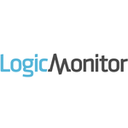Application Monitoring & Performance software: purchase guide
Application & Performance Monitoring Software in 2025: Because Visibility Beats Guesswork
What Is Application & Performance Monitoring Software
Application and performance monitoring (APM) software is your behind-the-scenes powerhouse. It gives you real-time visibility into the health, speed, and availability of your applications and infrastructure. Whether your systems are running in the cloud, on-premises, or in hybrid environments, APM tools tell you what’s working, what’s not, and most importantly—why.
From the moment a user clicks a button to the time a server processes that request, APM software tracks the entire journey. It identifies bottlenecks, system errors, resource spikes, and downtime risks—before they impact your customers or your business.
In short: it turns your blind spots into actionable insights.
Why Application Monitoring Is Business-Critical in 2025
Let’s get real. Today’s apps need to be lightning-fast, always-on, and user-friendly. One slow load time, one failed transaction, or one unexpected crash can cost you sales, reputation, and trust.
Here’s why performance monitoring is no longer optional:
Downtime is expensive—even in seconds
Studies show that just a few seconds of app downtime or lag can drastically reduce user satisfaction and conversion rates. Monitoring software helps you detect issues before users even notice them—minimizing disruption and preserving brand trust.
Complexity has skyrocketed
You’re not just managing a single application anymore. You’re dealing with microservices, APIs, databases, cloud services, containers, and remote endpoints—all interacting in real time. APM tools give you a single source of truth across this growing maze of infrastructure.
User experience drives loyalty
Today’s users expect flawless performance, 24/7. Whether you’re running a SaaS platform, a mobile app, or an enterprise backend, slow or buggy performance sends users straight to the competition. With performance monitoring, you can see how real users are experiencing your application and act fast when things go south.
Your team can't fix what it can't see
Without visibility, troubleshooting turns into guesswork. APM tools give developers, DevOps, and IT teams the insights they need to fix problems quickly, spot trends, and make smarter decisions.
How to Choose the Right APM Software
Choosing the best APM solution isn’t about ticking off a features checklist. It’s about finding a tool that fits your environment, your team’s workflow, and your business goals.
Focus on full-stack visibility
Your ideal solution should go beyond front-end metrics. It needs to monitor everything—user interactions, backend services, database performance, server load, and network latency. A single bottleneck in any layer can ripple across your system.
Prioritize real-time alerting with context
Alerts are only helpful if they’re actionable. Look for platforms that not only notify you of issues but also show you the exact service, transaction, or user flow that triggered the problem. Bonus points for built-in AI that reduces alert noise and prioritizes the most critical incidents.
Integration is everything
APM tools don’t work in a vacuum. They need to integrate with your CI/CD pipelines, log management tools, collaboration platforms, and cloud environments. Make sure the software plays well with your current tech stack—and future plans.
Easy onboarding and scalability
You shouldn’t need a six-month deployment plan just to gain observability. The best APM tools offer intuitive setup, agentless or low-overhead deployments, and pricing models that scale with your needs. Also look for vendors who provide onboarding support, documentation, and a responsive customer success team.
Top Application & Performance Monitoring Tools in 2025
| Software |
Key Features |
Pricing |
Trial & Demo |
Best For |
| Pandora FMS |
End-to-end monitoring, real-time alerts, customizable dashboards, hybrid infrastructure support |
Pricing on request |
✅ Free version
✅ Free trial
✅ Free demo |
Enterprises looking for a centralized platform that covers IT, app, and network monitoring in one |
| GSX Gizmo |
App performance tracking, email & collaboration tools optimization, usage analytics |
Pricing on request |
✅ Free version
✅ Free trial
✅ Free demo |
IT teams focused on improving collaboration tool performance like Microsoft 365 or Exchange |
| LogicMonitor |
Real-time metrics, automated discovery, AI-powered alerting, infrastructure observability |
Pricing on request |
✅ Free version
✅ Free trial
✅ Free demo |
Cloud-native companies and fast-growing tech teams who need visibility across dynamic environments |
| New Relic |
Full-stack observability, distributed tracing, user experience insights, real-time dashboards |
Pricing on request |
✅ Free version
✅ Free trial
✅ Free demo |
Product-centric organizations aiming to improve app performance and customer satisfaction |
| ServiceNav Monitoring |
Proactive monitoring, performance dashboards, SLA reporting, IT service visualization |
Pricing on request |
✅ Free version
✅ Free trial
✅ Free demo |
Mid-sized businesses wanting clear insights into app performance and IT service health |
2025 Trends in Application Performance Monitoring
Performance monitoring is no longer just about uptime—it’s about resilience, intelligence, and delivering continuous value. Here are the top APM trends shaping 2025:
AI-Powered Root Cause Analysis
It’s not enough to know that something broke—you need to know why. Modern APM tools use machine learning to analyze millions of data points, correlate events across services, and pinpoint root causes instantly. Say goodbye to blame games and endless log files.
Unified Observability Platforms
The line between APM, infrastructure monitoring, and log management is fading. Today’s top platforms combine them all into a single observability layer, giving teams unified dashboards, cross-domain queries, and shared context for faster incident response.
Real-User Monitoring (RUM) Takes Priority
More companies are investing in tools that show how actual users are experiencing their applications. RUM captures load times, errors, and interactions from real devices, in real conditions. It's the missing link between performance data and customer satisfaction.
Predictive Monitoring & Anomaly Detection
Why wait for an incident? Predictive APM uses historical data to forecast potential outages, slowdowns, or resource exhaustion. Anomaly detection flags unusual patterns—before users are affected. In 2025, the best APM is one step ahead.
Conclusion
If your application is at the heart of your business, then performance monitoring is its pulse check.
In 2025, staying competitive means knowing how your systems behave under pressure, how users experience your product, and how fast your team can react when something’s off.
Application and performance monitoring software gives you that clarity. It turns data into decisions, noise into insight, and problems into opportunities to improve.
Choose the right platform, and you’re not just monitoring—you’re mastering performance.



















